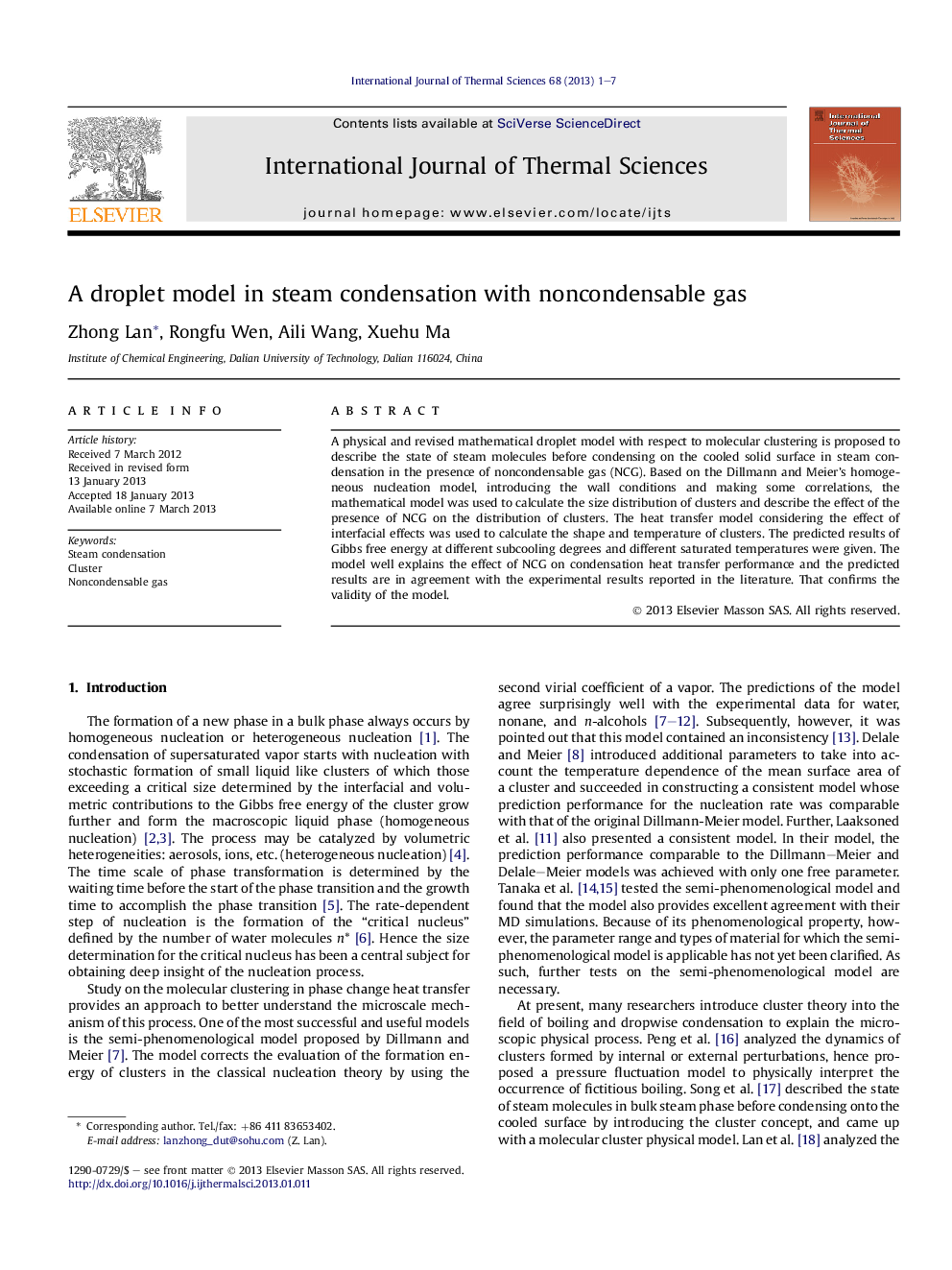| Article ID | Journal | Published Year | Pages | File Type |
|---|---|---|---|---|
| 668556 | International Journal of Thermal Sciences | 2013 | 7 Pages |
A physical and revised mathematical droplet model with respect to molecular clustering is proposed to describe the state of steam molecules before condensing on the cooled solid surface in steam condensation in the presence of noncondensable gas (NCG). Based on the Dillmann and Meier's homogeneous nucleation model, introducing the wall conditions and making some correlations, the mathematical model was used to calculate the size distribution of clusters and describe the effect of the presence of NCG on the distribution of clusters. The heat transfer model considering the effect of interfacial effects was used to calculate the shape and temperature of clusters. The predicted results of Gibbs free energy at different subcooling degrees and different saturated temperatures were given. The model well explains the effect of NCG on condensation heat transfer performance and the predicted results are in agreement with the experimental results reported in the literature. That confirms the validity of the model.
► A model of the state of steam molecules near the surface with noncondensable gas. ► The critical sizes and distributions of clusters at different operating conditions. ► The Gibbs free energies of formation at various subcooling degrees and temperatures. ► Contact the distribution of clusters with heat transfer performance quantitatively. ► Explain the microscopic mechanism of noncondensable gas on heat transfer.
